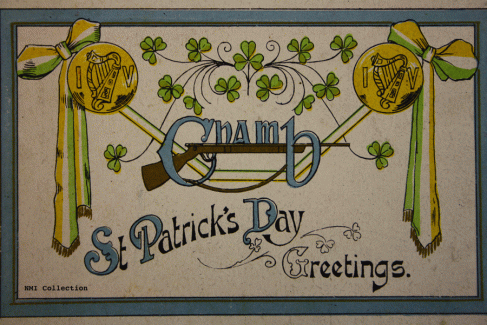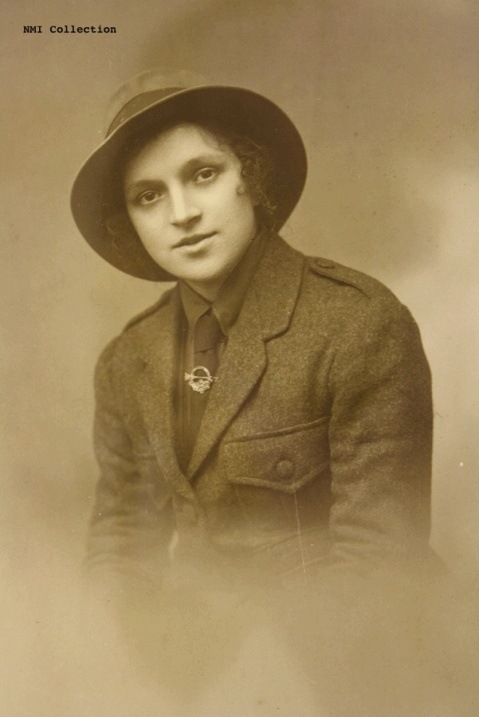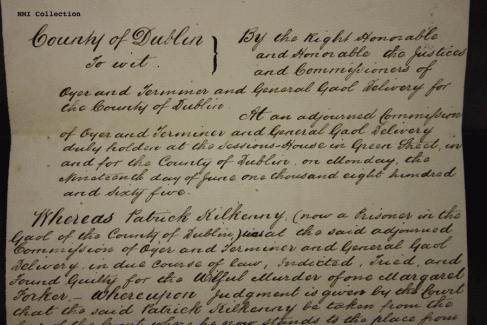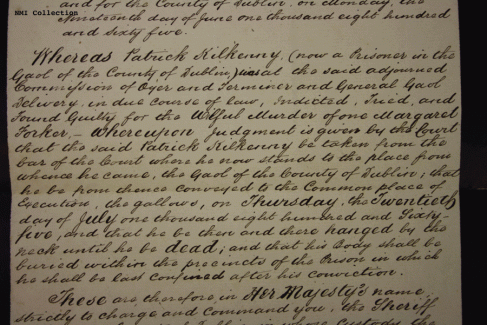 Anyone who’s been listening to RTE’s The History Show recently will have heard about the making of a list of the children who were killed in Dublin during the 1916 Rising. Joe Duffy began to compile this list as a result of a collaboration with the Jill and Jill Foundation (a children’s charity) and has requested listeners to contribute any information about these children and how they died. Working with various historians and record holders including the General Records Office, Glasnevin Cemetery and the National Museum of Ireland, the list currently stands at 38 children under the age of 16. Given that about 390 civilians died in the week of the Rising (not counting the rebels, police and army), the children represent about 10% of those who died in the various battles and crossfire throughout the city and suburbs. Some of these children were themselves attached to organisations such as Fianna Eireann (14 year old Sean Healy), and the Irish Citizen Army. One member of the ICA was Charles Darcy, a 15 year old from the Gloucester Street area who died on Monday 24 April, the first day of the Rising. This is his memorial card, which was donated to the National Museum along with a small collection of other papers by his mother, Elizabeth Darcy, in 1970.
Anyone who’s been listening to RTE’s The History Show recently will have heard about the making of a list of the children who were killed in Dublin during the 1916 Rising. Joe Duffy began to compile this list as a result of a collaboration with the Jill and Jill Foundation (a children’s charity) and has requested listeners to contribute any information about these children and how they died. Working with various historians and record holders including the General Records Office, Glasnevin Cemetery and the National Museum of Ireland, the list currently stands at 38 children under the age of 16. Given that about 390 civilians died in the week of the Rising (not counting the rebels, police and army), the children represent about 10% of those who died in the various battles and crossfire throughout the city and suburbs. Some of these children were themselves attached to organisations such as Fianna Eireann (14 year old Sean Healy), and the Irish Citizen Army. One member of the ICA was Charles Darcy, a 15 year old from the Gloucester Street area who died on Monday 24 April, the first day of the Rising. This is his memorial card, which was donated to the National Museum along with a small collection of other papers by his mother, Elizabeth Darcy, in 1970.
Charles was born in about 1901 to James Darcy, a labourer, and his wife Elizabeth, both from Co. Wicklow. In the 1911 census the family are recorded as living in No. 4 Kane’ Court, a two-roomed labourer’s cottage off Gloucester Street, with six children; Thomas, James, Charles, Edith, Patrick and Agnes. In 1916 the family were living in a similar dwelling at No. 4 Murphy’s Cottages, Gloucester Place, between City Quay and Great Brunswick (Pearse) Street on the southside of the city centre.
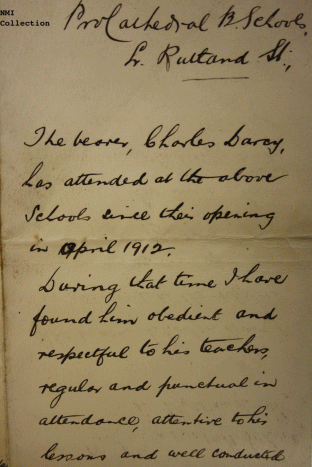 Charles had attended the Pro-Cathedral School on Lower Rutland Street since it was opened in April 1912, and was educated there until May 1914, when, at age 13, he was no longer obliged to attend school. A letter of reference written by his schoolmaster Mr A. Scully describes him as obedient and respectful to his teacher, regular and punctual in attendance, attentive to his lessons and well conducted in every respect. He was also a member of the Boys’ Sodality attached to the Pro-Cathedral on Marlboro Street, and attended regularly to his religious duties. Having left school at this age, which was normal in the early 20th century, he found work in a draper’s shop as an assistant. He also appears to have joined the Irish Citizen Army around this time. When the rebellion broke out, he reported for duty at Liberty Hall.
Charles had attended the Pro-Cathedral School on Lower Rutland Street since it was opened in April 1912, and was educated there until May 1914, when, at age 13, he was no longer obliged to attend school. A letter of reference written by his schoolmaster Mr A. Scully describes him as obedient and respectful to his teacher, regular and punctual in attendance, attentive to his lessons and well conducted in every respect. He was also a member of the Boys’ Sodality attached to the Pro-Cathedral on Marlboro Street, and attended regularly to his religious duties. Having left school at this age, which was normal in the early 20th century, he found work in a draper’s shop as an assistant. He also appears to have joined the Irish Citizen Army around this time. When the rebellion broke out, he reported for duty at Liberty Hall.
 The details of Charles’ death are contained in a letter from Elizabeth to Lieutenant A. Rasdale of the Office of the Adjutant General in 1923 during the process of claiming a military pension on Charles’ behalf. Charles was under the command of Captain Sean Connolly in the City Hall garrison, and was allotted to a section under Sergeant E. Elmes to take possession of Henry & James’ premises (a clothiers) as a support to City Hall itself. He met his death on the roof of those premises on the evening of Easter Monday. Charles was shot by a British military sniper from a position around Dublin Castle, and his body was brought into the grounds of the Castle on Tuesday 25 April. His death certificate lists his cause of death as a gunshot wound, and notes that there was no medical attention. It also states that his mother Elizabeth was informed of his death as the next-of-kin.
The details of Charles’ death are contained in a letter from Elizabeth to Lieutenant A. Rasdale of the Office of the Adjutant General in 1923 during the process of claiming a military pension on Charles’ behalf. Charles was under the command of Captain Sean Connolly in the City Hall garrison, and was allotted to a section under Sergeant E. Elmes to take possession of Henry & James’ premises (a clothiers) as a support to City Hall itself. He met his death on the roof of those premises on the evening of Easter Monday. Charles was shot by a British military sniper from a position around Dublin Castle, and his body was brought into the grounds of the Castle on Tuesday 25 April. His death certificate lists his cause of death as a gunshot wound, and notes that there was no medical attention. It also states that his mother Elizabeth was informed of his death as the next-of-kin.
After the formation of the Irish Free State the Military Service Pensions Act (1924) was instigated, and any persons with proven service during the 1916 Rising and the War of Independence were to be awarded a Certificate of Service and were also entitled to a military service pension. In 1923 Elizabeth started the process of claiming the pension on Charles’ behalf, which resulted in a series of written communications between her and the Ministry of Defence.
In May 1924, Elizabeth received a letter confirming that she would receive a one off gratuity payment of 150 pounds in recognition of Charles’ service.
All such persons were later also eligible to receive the 1916 Medal. These were awarded in 1941 on the 25th anniversary, and Elizabeth received one for Charles at this time, who would have been 40 if he had survived. The medals were not generally awarded with inscriptions unless the recipient was killed in the rising; this medal has Charles’ name and a number. This medal, along with the various papers relating to Charles’ service and claim, are now with the National Museum of Ireland.
I always find it poignant that the last paragraph of school master Scully’s letter of reference for Charles reads ‘I have much pleasure in bearing testimony to his good character and shall always be pleased to hear of his success in life’.
He is buried in the 1916 Plot of Glasnevin Cemetery.
© Brenda Malone. This work is original to the author and requires citation when used to ensure readers can trace the source of the information and to avoid plagiarism.
https://libguides.ucd.ie/academicintegrity/referencingandcitation
Sources and general reading used in the creation of these articles are listed on the Further Reading page.



